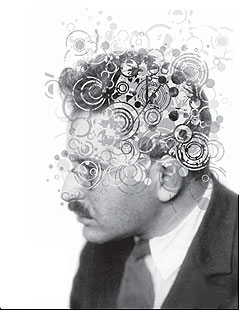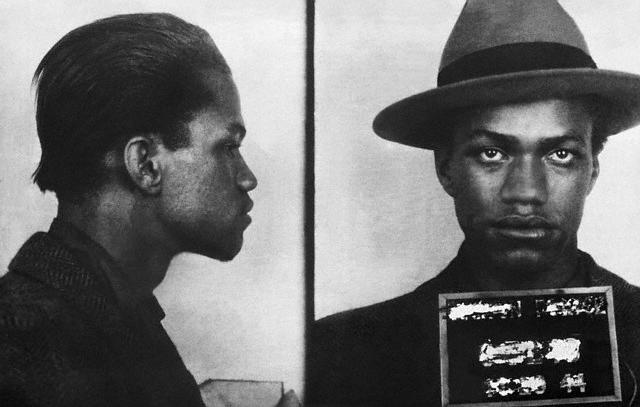“From the heroic fight of the Vietnamese against US aggression, to the actions of the Palestinian commandos, to guerrilla activity in Africa and Latin America, the magazine has given a panorama of the present situation in the Third World, that vast mosaic of oppressed nations exploited by imperialist hegemony.”[1]
My explorations in Tricontinental this week have been exciting. After sorting through the first two years of the magazine, it is clear that it is getting increasingly sophisticated in execution. Watching this shift unfold is starting to give me much more concrete ideas for my paper. One thing that struck me as important for the creation of a “Tricontinental imagined community” or a “Tricontinentalist culture” is that the journal started to publish historical documents deemed to be of interest to the ongoing struggles for decolonization in a section titled “Notes For History.” Examples include the text of the “Proclamation of the National Liberation Front” in Algeria, dating from 1 November 1954, republished here in 1968, and the “Address of the Palestinian Delegation before the Second International Conference in Support of the Arab Peoples,” delivered in January 1969 and published in Tricontinental in July. We can already notice a couple things here: Arab experiences in the struggle for self-determination were frequently highlighted, which at that time – and to this day[2] – were most often marginalized, ignored and/or ridiculed by the mainstream Western press, (such outlets were described as “imperialist” or “bourgeois” by the writers in Tricontinental). This is one of the many aspects of Tricontinental that make it a particularly broad-minded and even anti-racist endeavor, one whose basic practices undermined national barriers and exceptionalisms, seeing the world as one enmeshed battlefield between revolutionary and counter-revolutionary forces.[3]
From the appearance of these two documents we can also glean a sense of the magazine’s sense of history. The proclamation of the Algerian FLN (the French initials for National Liberation Front) occurred about fifteen years before the issue was published, clearly qualifying it as a “historical document” – though some of you nineteenth-century American historians may beg to differ. Why was it chosen? Well, the Algerian FLN led a popular struggle that successfully achieved its aim of independence from France in March 1962. To do so, the FLN used a panoply of tactics, from labor action to armed struggle to diplomatic agitation. The FLN thus became one of the primary objects of emulation by Third Worldist revolutionaries the world round (the trinity of which is probably Algeria, Cuba, and Vietnam). That much is easy to understand. But the “Address of the Palestinian Delegation” published in “Notes for History” was only a few months old, and Palestinians remain to this day an occupied, stateless population. Clearly, the present status of the Palestinians was not foreseeable to Tricontinental in 1969; then, the Palestinians were a people in revolution that helped to fashion the methods, aims, strategies, and cultures of Tricontinentalism. That the statement of the Palestinian delegation was printed as a “Note for History” thus did political and cultural work: the Palestinian revolution was anointed as destined to victory.
Another thing I noticed that spoke to at least one of the questions I was asked last week, concerning the range of opinions published by the magazine, was that the journal did indeed engage with the arguments of their opponents and printed them in the journal, when appropriate. Issue 11 (March-April 1969) featured a contribution by probably the absolute last person I would have expected to find in the table of contents: the US General William Childs Westmoreland, then the military commander of the American war in Vietnam. He was, to put it simply, the single most concrete example of a counter-revolutionary actor in the 1960s. His text, needless to say, was not personally mailed in to the editors for inclusion. Rather, they reprinted the text of a speech on counterinsurgency he gave at the 8th Conference of Latin-American Armies, held in Rio de Janeiro, Brazil in September 1968. As you can see, the counter-revolutionary forces were international and transnational actors as well…
[1] “Two Years of Tricontinental,” Tricontinental 13 (July-August 1969), 133.
[2] See, for example, Robert D. Kaplan, “The Lure of Nationalism,” Forbes 5 March 2014 http://www.forbes.com/sites/stratfor/2014/03/05/the-lure-of-nationalism/.
[3] I will note here some of the main ways the journal achieves this, a notion which I need to develop further, later. First, the magazine is trilingual (Spanish, French, English) from the beginning to the end of its production. Secondly, the journal published articles by writers from North and South America, Europe, Africa, and Asia in what appears to be a remarkably egalitarian ratio of contributors (this is one area that topic modeling might contribute to my research – how diverse was it in actual practice?). Third, the subject matter itself was consciously antiracist, internationalist, and inherently political.




